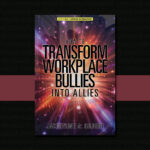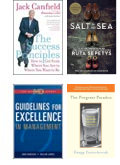We envision courage as superhuman feats—like achievements from the greatest generation, that occurred despite the enormous risks involved. Great acts of courage begin with a moral line in the sand—here is the point at which I will act. For some people courage emanates from battling personal demons; for others, forward motion ignites when witnessing abuse.
Most situations are not as compelling. Choosing status quo because it’s comfortable (versus venturing into the unknown—where we are not guaranteed success but where the tension between what we are and what we can be, between what we see and what has not yet occurred becomes too great) is our mode du jour.
A leap of faith requires a plan. Calculated risks entail good posturing: assessing the people, resources, obstacles, and challenges that lie ahead. We should cultivate a team of collaborators, like-minded folks who can help us get to where we are headed. Who might be able to assist, advise, support, mentor, and act as a sounding board? Assembling a team of co-conspirators before we embark on our journey provides scaffolding and a safety net of advice.
We can approach success with a fixed mindset (feeling deflated when the result is different from what we had envisioned). But that does not make our results less valid. Forman (2018) advises not worrying about what has not yet transpired (actions that might induce analysis paralysis), and instead using that energy to act. Worry runs amuck when we obsess about things we can’t see. She suggests thinking about similar times when we tried every angle, and at the last minute, were rewarded with exactly what we wanted.
Positivity is motivating because we feel buoyant about what might occur. “Doing something courageous in your career takes much more effort, energy, and resources than staying in your comfort zone” (Liu, 2023). Brower (2021) suggests that courage is built over time, through repeated exposure. Like intuition that is the result of years of congealed analysis (where people react from the gut because they have seen it and done it so many times), courage may be a similar amalgam of “tried and true” solidified into a feeling of “here’s what I need to do now.” A courageous person seeks new experiences to make the world a better place, and in the process, improve themselves—one brave act at a time.
Pushing the envelope (of ourselves) takes effort—we choose to do otherwise as opposed to wading in the here and now. Similarly, community building entails forging bonds across barriers—like when an Orthodox Jew invited a white supremacist to dinner (Tyson, 2020). Most people are apprehensive to go against the grain. We fear that if we stick out our necks they might get chopped. So we sit idly in the low stakes game of watching—silent, afraid, or conversely enjoying the show (and grateful not to be the brunt of it). Courageous people are willing to stand up, stand by themselves, stand down (if warranted), take the heat, refuse to play the game or play along, and fend off others who try to cut them off at the knees.
The courageous nip ego in the bud–because they realize that acting solely in their self-interests is limiting: “Winning in risky situations then requires being what you haven’t been, thinking as you haven’t thought, and acting as you haven’t acted” (Reardon, 2007). Sometimes courage emanates from a sense of stagnation, “withering” when we feel stale, unchallenged, or deprived of a sense of meaning. “Safe” is ultimately a road to failure. A constant reach for what we can be—a never-ending cycle of wanting, becoming, seeking, and reaching is the stair step to becoming who we were meant to be. The process might take longer than we anticipated, but the journey is always worth it.
Peering out to see how other people live, to learn how one person can make a difference can be life altering. Disaster relief, befriending someone who’s been bullied, looking at the aftermath of a storm from someone who’s survived it, and speaking to a foster child might induce us to behave differently. Daniel Ariely (2010) explains that it is personal stories, not mass appeals that grab our attention. Community grows when the boundary of who we are becomes permeable—in other words, when we see ourselves in others, and when we see ourselves as one.
The converse of courage is not self-focus, but rather carnivorous intent—e.g., attaching ourselves like a host to feed off other people, failing to consider our behavior (or to even register that any consequences exist). Narcissists are at their core cowards who refuse to acknowledge who they are and who view relationships from an exploitative perspective—what can I take to enhance myself? Self-centeredness exists on a continuum—from gracious nobility to users/manipulators and abusers.
Schmitt (2013) reports that cowards fail to take the high road:
- They gossip and say negative things about employees to other people—when doing so clearly does not help them, the situation, or the other person. Gossip’s sole purpose is to make someone else small and to inflate the accusing party by comparison.
- They talk at us. They aren’t interested in hearing our opinion because “it is my way or the highway.” Their way is the one best unquestioned manner of doing things and it’s the responsibility of everyone else to get on board. But if they acknowledged their failings or asked for feedback then perhaps, they could improve and become more of a team player.
- Pretend to be upstanding citizens despite their own record of poor conduct. Their word is not their bond. When the going gets tough they back pedal and leave people in the lurch; they assess the potential fallout, then selectively toss others to the curb.
- View heterodox views and ideas as threatening. They reinforce the existing structure brick by brick, not realizing that some of the bricks are misplaced, and that some structural elements themselves must change. A true leader has the curiosity to discuss difficult issues and invite feedback.
Courage is trying to be the best version of ourselves.
References
Ariely, D. (2010). The upside of irrationality: The unexpected benefits of defying logic at work and at home. New York, NY: HarperCollins.
Brower, T. (2021). Be brave: How to build your professional courage. Forbes. https://www.forbes.com/sites/tracybrower/2021/10/24/be-brave-how-to-build-your-professional-courage/?sh=61d6cf985048
Forman, T. (2018). Finding the courage to make a change. Forbes.
https://www.forbes.com/sites/josephliu/2023/10/16/how-bravery-can-transform-your-career/?sh=290b91bf450c
Liu, J. (2023). How bravery can transform your career. Forbes. https://www.forbes.com/sites/josephliu/2023/10/16/how-bravery-can-transform-your-career/?sh=290b91bf450c
Reardon, K. K. (2007). Courage as a skill. Harvard Business Review. https://hbr.org/2007/01/courage-as-a-skill%20reardon12
Schmitt, J. (2013). 12 signs of cowardly leadership. Forbes. https://www.forbes.com/sites/jeffschmitt/2013/04/08/12-signs-of-cowardly-leadership/?sh=463ad70c3b6c
Tyson, J. (2020). Beautiful resistance: The joy of conviction in a culture of compromise. Colorado Springs, Colorado: Waterbrook & Multonomah.





Recent Comments